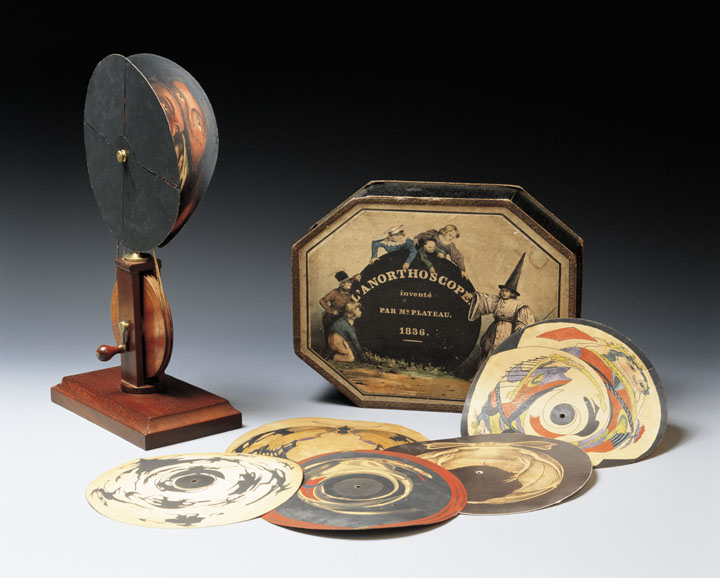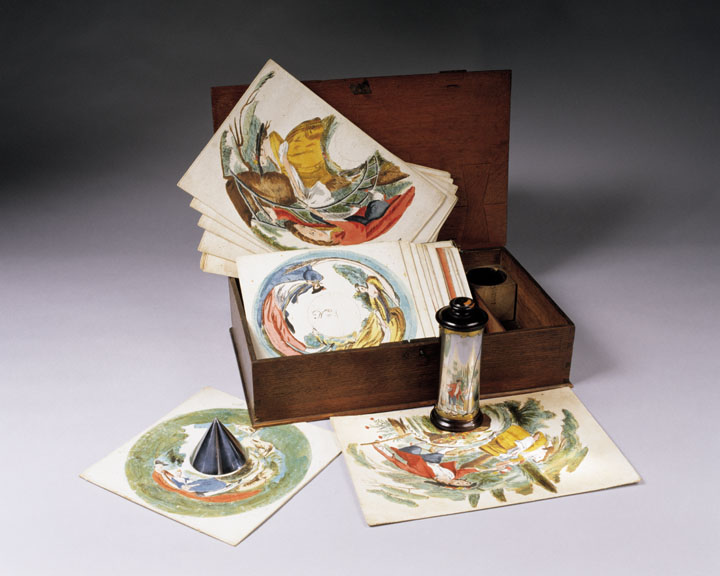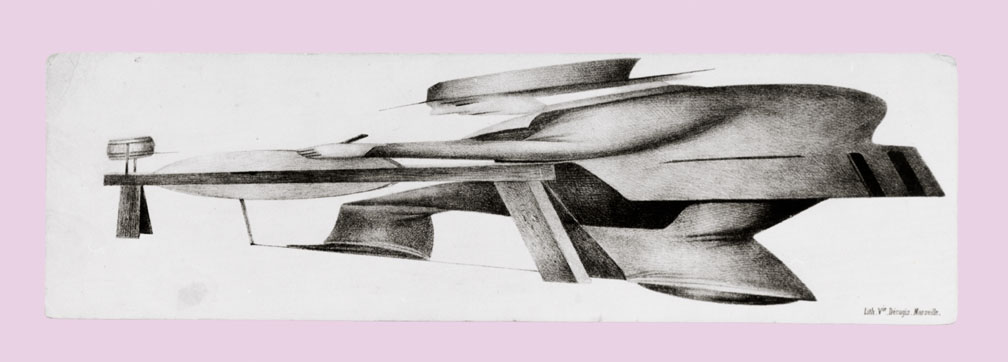Glossary A
A - B - C - D - E - F - G - H - I - J - K - L - M - N - O - P - Q - R - S - T - U - V - W - X - Y - Z
Afterimage
Also known as 'persistence of vision'. A fleeting phenomenon that occurs during the course of visual perception when the optical stimulus suddenly disappears.
The 'afterimage' effect can be elucidated by the example of a piece of red-hot coal fixed to a cord and whirled in a circle in a darkened space.
At rest the coal looks like a glowing dot, in motion it becomes a continuous line. This experiment was demonstrated as early as 1765 by the Chevalier Patrice d’Arcy (1725–79) and shows that the afterimage lasts as long as the time taken for the piece of coal to make one revolution, i.e., a minimum of 0.133 or 8/60th of a second. Consequently, in the case of film footage, 16 sequential images per second are perceived as continuous movement.
Anamorphosis [Greek: aná = to change; morphe = shape, form]
Transformation or distorted representation according to a specific set of rules.
The figure only assumes its correct proportions and becomes legible when the distortion is resolved, either by changing the viewpoint (for instance, looking from an extreme angle) or by using a reflective geometric body or a prismatic lens.
The earliest known anamorphosis was made by Leonardo da Vinci (1452–1519): a cloud-like drawing which, viewed from an extreme lateral angle, resolves into the head of a child. However, while Leonardo – or Albrecht Dürer’s (1471–1528) pupil Erhard Schön (1491–1542) – still regarded anamorphosis as a bold optical experiment, the Parisian Minorites (learned Franciscan monks) started to conduct systematic examinations of this phenomenon from around 1630. François Nicéron (1613–46) and Jacques Ozanam (1640–1717) wrote early theoretical treatises on anamorphosis. They saw it as the ideal disguise for motifs with a double meaning.
Anamorphoses are divided into optical (linear anamorphoses, anamorphoses on geometric bodies), catoptric (reflective cones, pyramids, prisms and cylinders) and dioptric anamorphoses (where the image is resolved if viewed through a faceted lens).
Anorthoscope
[Greek: anorthô = to correct; skopeô = to look, to see]
Device for resolving optical illusions created by distortion.

Around 1824 the Englishman Peter Mark Roget (1779–1869) described the fence phenomenon: if one looks through a slatted fence at a passing coach, its wheels seem to stand still while the spokes seem to bend.
Optical illusions, of the kind that can be created by cogwheels for instance, aroused the interest of the English physicist Michael Faraday (1791–1867), who observed that two cogwheels turning in opposite directions appear to stand still. Inspired by this finding, in 1828 Joseph Plateau (1801–83) developed the anorthoscope, which only came onto the market in France in 1836.
This device consists of two discs, fixed to a single axis but rotating in opposite directions. While the picture disc has an anamorphous drawing, the other (black) disc has four slits arranged in a cross shape. If the picture disc rotates at four times the speed of the slit disc, the viewer can see the picture through the slits, no longer distorted and apparently standing still. Plateau thus replaced the fence with the slit disc and the bent spokes with the image distorted by means of cylindrical anamorphosis.


